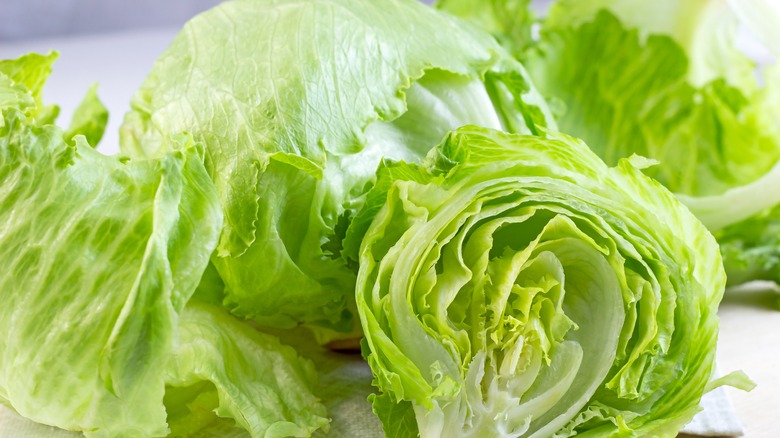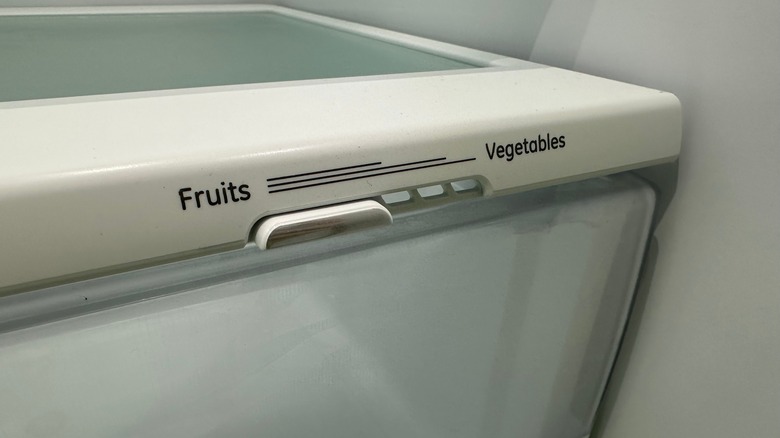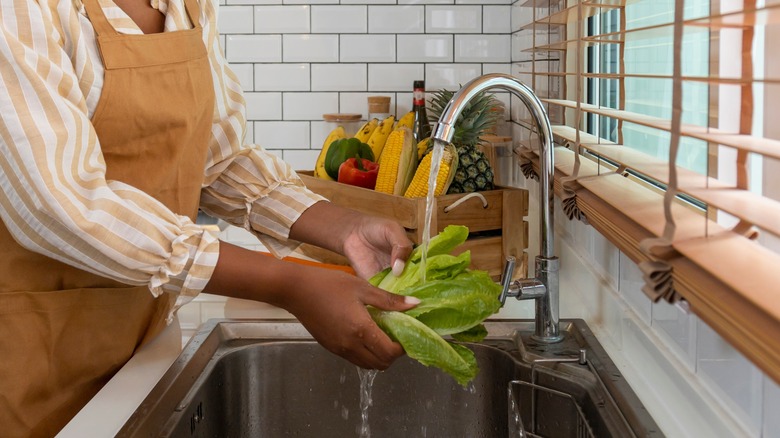The Storage Mistake To Blame For Your Spoiled Lettuce
Do you remember a time when you bought a fresh head of lettuce, stored it in your fridge, and found it wilted and spoiled just a few days later? The cause of your confusion and frustration might have been right next to the lettuce itself. If you store these greens near other vegetables and fruits that emit ethylene gas, these troublesome bedfellows will likely cause the whole head to rot.
There are lots of tips to stop wasting lettuce, and one is to keep your lettuce away from fruits and veggies that release ethylene gas. Ethylene is ripening agent that can age (and soon rot) produce well after it's picked, even in the fridge. This natural compound can cause greens like lettuce to rapidly wilt and decay. In contact with ethylene, iceberg lettuce is especially prone to developing those odd rust-colored spots you sometimes see on the leaves.
What are some of the fruits and veggies that shouldn't sit next to your lettuce? Apples, avocados, tomatoes, pears, nectarines, peaches, and ripe bananas are just a start. The best place to store your head of lettuce is in a high humidity crisper drawer in the fridge, away from any other produce.
Why you should store lettuce in the crisper drawer
A high humidity crisper drawer features a closed vent doesn't allow dry air to get inside, and this environment is ideal for heads of lettuce. That extra amount of moisture will help keep the greens fresh and crisp, not wilted. If the humidity level in your crisper drawer can be adjusted via a dial or other control, customize the settings to make the moisture level as high as possible before storing your lettuce. Don't worry if your crisper drawers do not have settings, as they likely have an automatic high humidity function that will still do your lettuce right.
The other benefit of the crisper drawer is that it provides a closed container that shuts out harmful ethylene. The tightly-shut space will quickly backfire if you trap ethylene-producing items in with your greens, of course, so if your refrigerator has two crisper drawers, use one solely for your lettuce, and the other drawer for your other veggies and fruits. There are also other tips you should know for storing lettuce and keeping it fresh for as long as possible.
Additional tips for storing lettuce
The next time you buy a head of lettuce with plans of storing it right away in your refrigerator, don't pick at the leaves. It is crucial that the whole head of lettuce remains intact, because if you cut it or pluck away any leaves, the remaining leaves wind up with more surface area and can quickly lose moisture. There is an increased probability of bacteria developing on those drier areas, which can cause your lettuce to spoil.
You may feel inclined to wash your head of lettuce after you bring it home. However, if you're not going to make a recipe right away, refrain from washing your greens. Some moisture in the lettuce's environment is a good thing, but too much water directly on the leaves can cause mold to grow. Keep your lettuce far away from other produce and resist the urge to cut or wash it in advance, and it should stay crisp, fresh, and ready for your Caesar salads, lunchtime sandwiches, or even recipes like romaine lettuce with roasted garlic and parmesan dressing.


